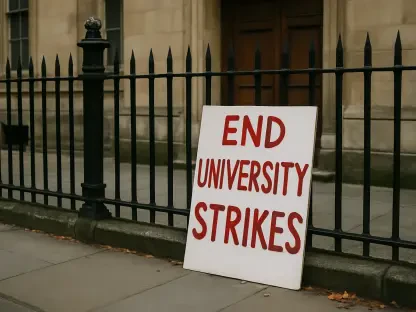In this exclusive interview, we sit down with Camille Faivre, an expert in education management specializing in the development and implementation of open and e-learning programs. With the recent challenges and changes in the U.S. Department of Education’s Office for Civil Rights (OCR), Camille offers her insights into the ongoing legal battles, workforce changes, and the critical role of civil rights enforcement in education.
Can you explain the recent federal judge’s order regarding the U.S. Department of Education and the reinstatement of laid-off OCR employees?
This ruling is significant because it highlights the judiciary’s role in overseeing federal agency operations, especially when they impact civil rights. The judge ordered the OCR employees’ reinstatement, emphasizing that the mass layoffs, coupled with the closure of several regional offices, hampered the department’s ability to address civil rights complaints effectively. It underscores an immediate need to restore OCR’s capacity to carry out its responsibilities.
Why were the Office for Civil Rights employees laid off initially?
The layoffs stemmed from restructuring efforts under the prior administration, likely aimed at reducing costs or reallocating resources. However, these changes resulted in significant understaffing, making it challenging for the OCR to perform its essential functions. The intent behind the layoffs was to streamline operations, but unfortunately, it severely impacted the OCR’s effectiveness.
How have the layoffs affected OCR’s ability to handle civil rights complaints?
The impact has been profound, as the reduction in staff has left remaining investigators overwhelmed, with their caseloads doubling. This strain makes it nearly impossible to efficiently address the numerous complaints the OCR receives, ultimately stalling civil rights enforcement and leaving cases unresolved.
What were the specific reasons the court found to issue a preliminary injunction against the layoffs?
The court found that the agency’s ability to fulfill its statutory obligations had been compromised due to the layoffs. There was evidence showing a suspension of new investigations since the last presidential transition and neglect of existing cases. This pointed towards the OCR failing in its duties, justifying the injunction to pause and reassess the layoffs.
Can you elaborate on the role of the Victim Rights Law Center in the case against the U.S. Department of Education?
The Victim Rights Law Center played a pivotal role by representing individuals directly affected by the OCR’s inaction. Their involvement aided in demonstrating the OCR’s inability to meet its enforcement duties due to the staffing cuts, making a strong case for preserving the agency’s integrity and function.
How has the caseload for remaining OCR investigators changed since the layoffs?
The caseload per investigator has more than doubled, from an average of 48 to 115 cases. This drastic increase is unsustainable and highlights the urgent need for more resources and personnel to handle the backlog of civil rights complaints effectively.
What statistics can you share about OCR’s open civil rights investigations?
Currently, there are over 12,000 open civil rights investigations, with many being overseen by the closed regional offices. This backlog illustrates the extensive scope of work that the OCR faces and the critical need for reinstating laid-off staff to address these issues.
Describe the impact of the office closures on OCR’s operations and investigations.
The closures have left the OCR unable to conduct thorough investigations as before. With key offices shut down, there’s a lack of regional presence needed to carry out crucial on-the-ground investigations, gather facts, and interact with local educational institutions.
How did the Biden administration plan to address the rising caseload at OCR?
The administration had proposed increasing the OCR budget and staffing levels to manage the growing number of cases. Recognizing the untenable situation, the aim was to bolster the department’s capacity to maintain its obligations and address the mounting civil rights concerns.
What concerns did Catherine Lhamon, the former leader of OCR, express about the current caseload?
Lhamon labeled the caseload as unsustainable and worrying, pointing out that the volume of cases far exceeded what the OCR could manage effectively. Her concerns highlight the significant pressures facing the department and the risk of failing to deliver on civil rights protections.
According to court documents, how has the Department of Education handled various types of discrimination complaints since the beginning of 2025?
Since 2025, the department has largely neglected civil rights complaints, focusing mainly on issues affecting certain demographic groups. It reprioritized cases involving disabilities, but many others remained neglected, leading to an incomplete fulfillment of its duties.
What instructions were given to OCR staff following the layoffs regarding ongoing investigations?
Post-layoffs, staff were instructed to halt communication with those involved in the cases and cease normal investigation processes like document requests and meetings. This directive significantly disrupted proper case handling and resolution.
Who is Judge Myong Joun, and what was the rationale behind his decision?
Judge Joun is a federal judge who played a crucial role in this case. His decision was based on the observation that the Education Department’s layoffs rendered the OCR ineffective. He stressed that maintaining the OCR’s staffing was paramount for enforcing crucial civil rights protections.
What other related case led to a temporary block on the Education Department’s RIFs?
The case New York v. McMahon also involved a challenge to the Department’s plans to terminate staff. It resulted in a temporary block on the reductions in force, highlighting the broader challenges of managing federal workforce changes amid legal and operational constraints.
How has the department responded to the court’s orders regarding the reintegration of employees?
While the department is appealing the decision, it has begun efforts to reintegrate employees as required by the court. This entails ongoing communication with affected staff to ensure a smooth transition back to their roles, though the process is still unfolding.
Why does the judge view the OCR as an essential entity within the American education system?
Judge Joun recognized the OCR as a vital component in safeguarding civil rights within education. Any reduction in its capacity to perform statutory duties represents a significant setback for civil rights enforcement, underscoring the need for its full operational strength.
What future steps has the court mandated for the education department to ensure OCR can perform its duties?
The court has mandated weekly updates from the Education Department on its progress to restore the OCR to its full operational status. This continued oversight aims to ensure that the agency can meet its obligations and address the backlog of civil rights complaints effectively.









